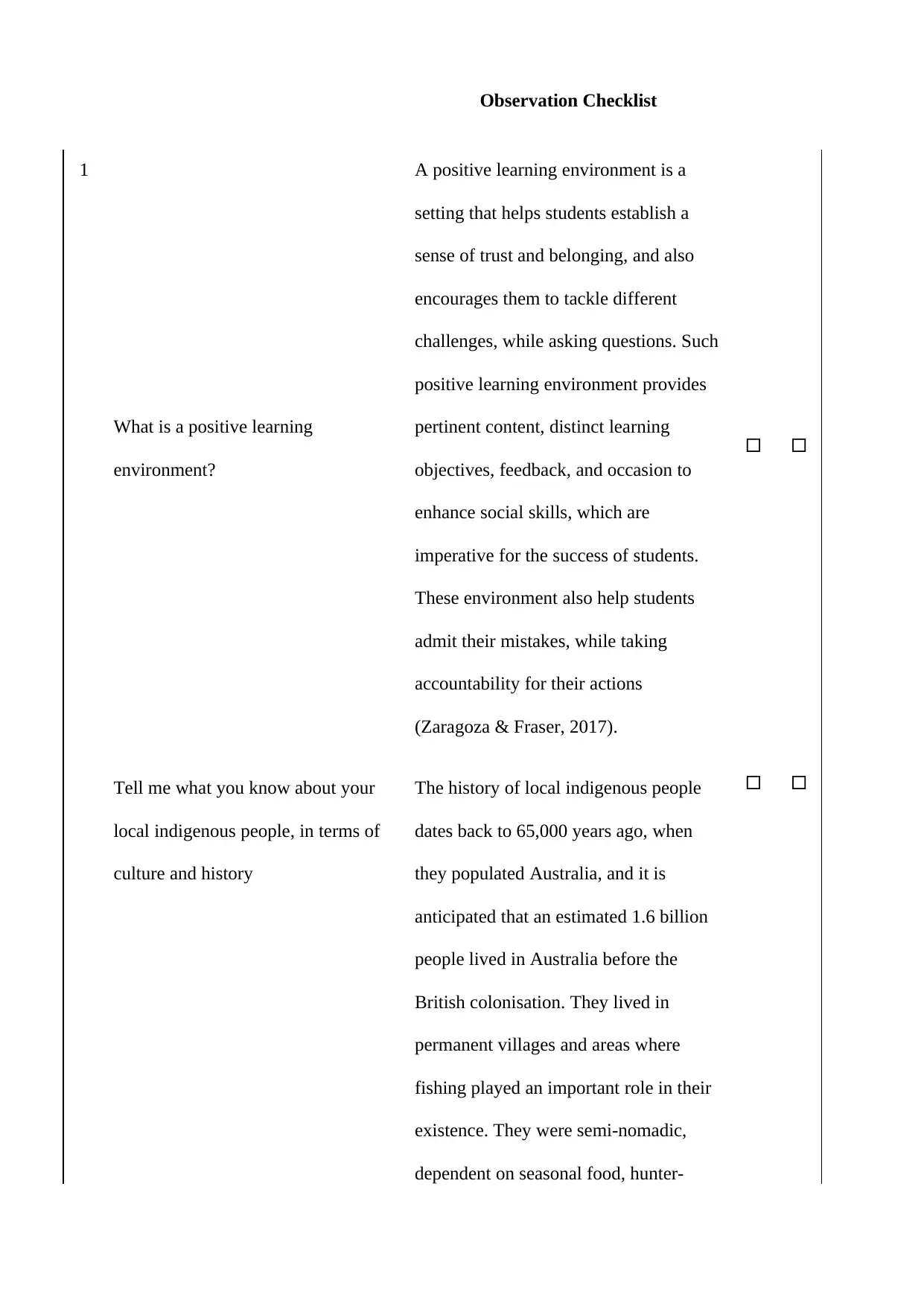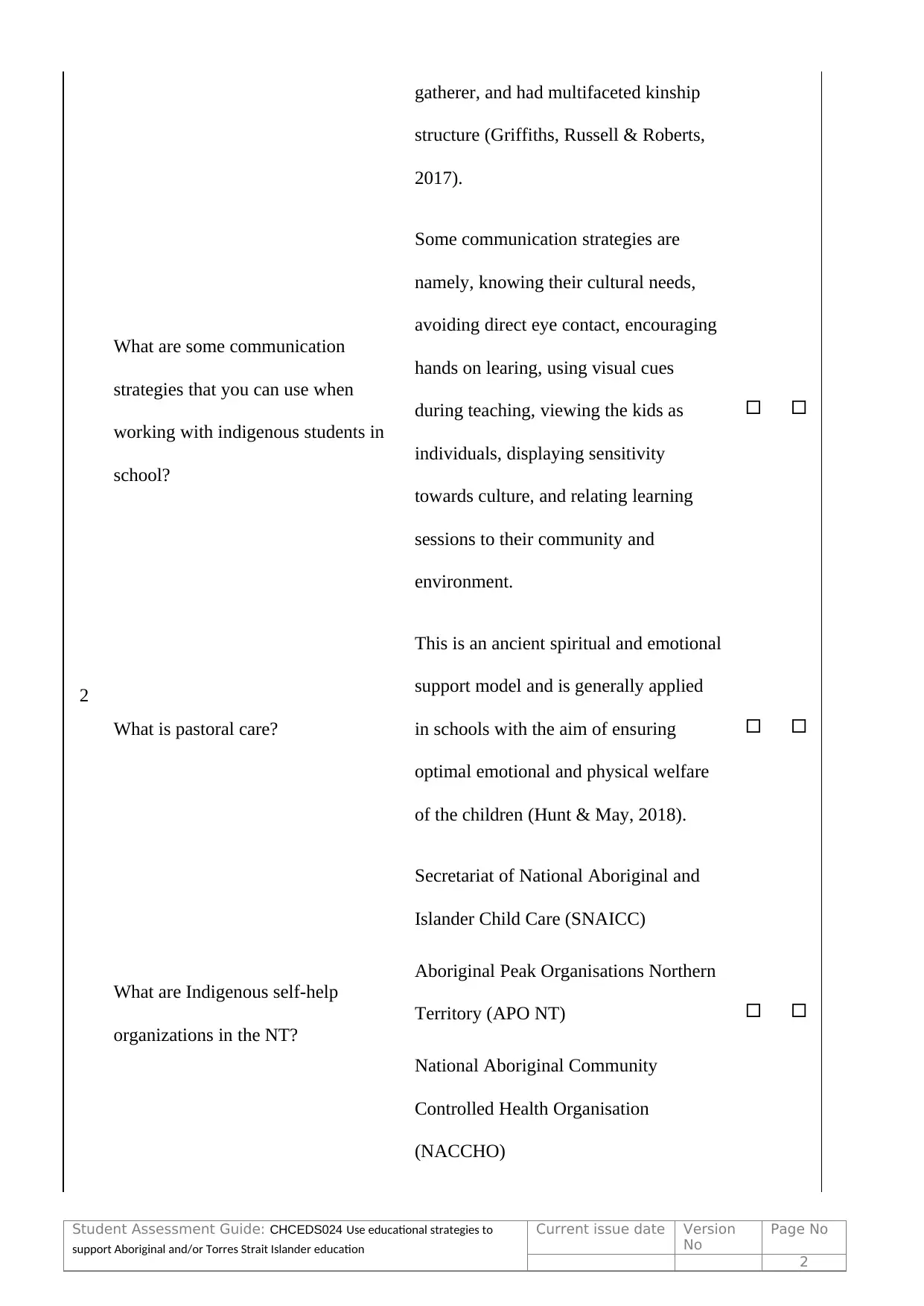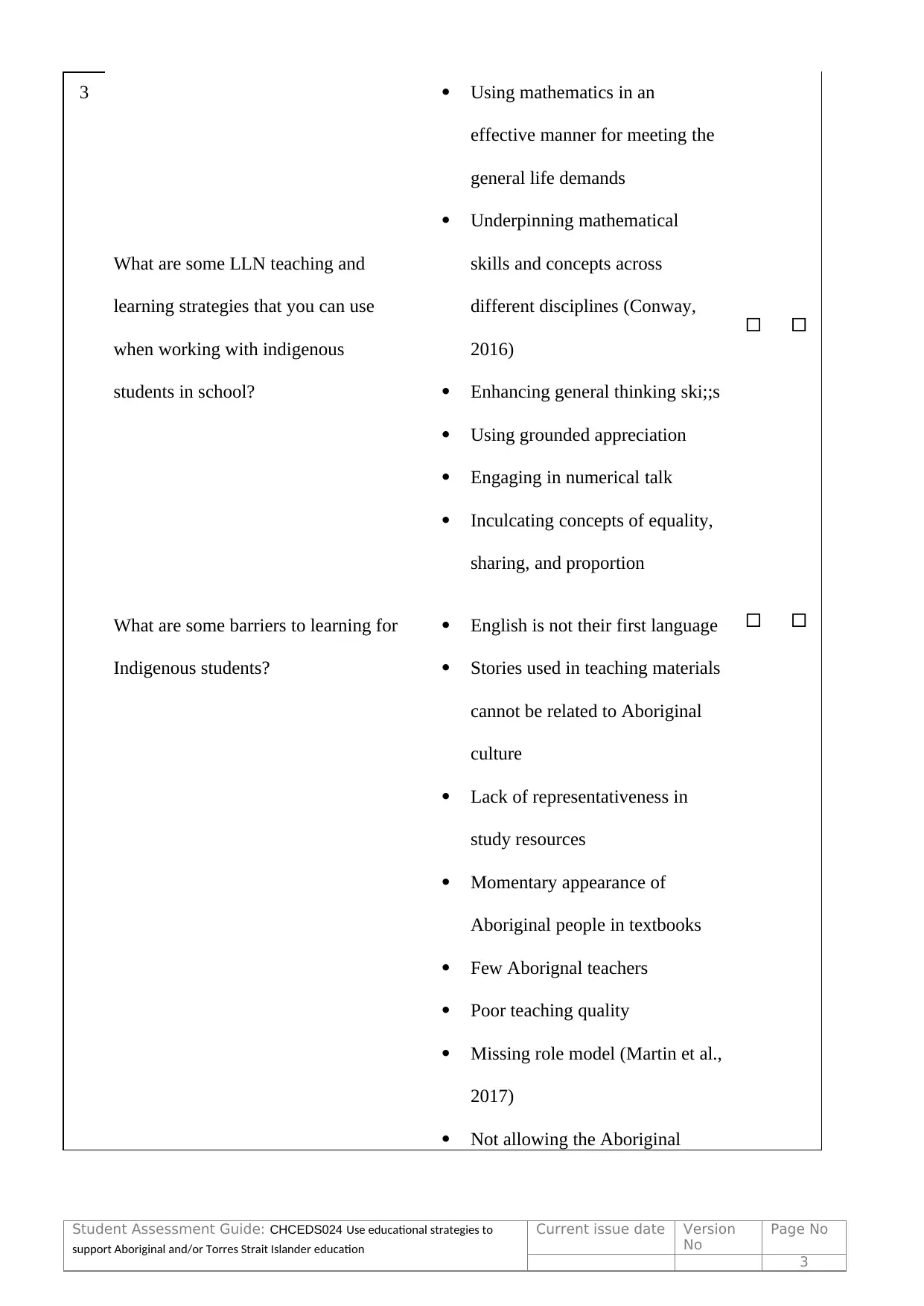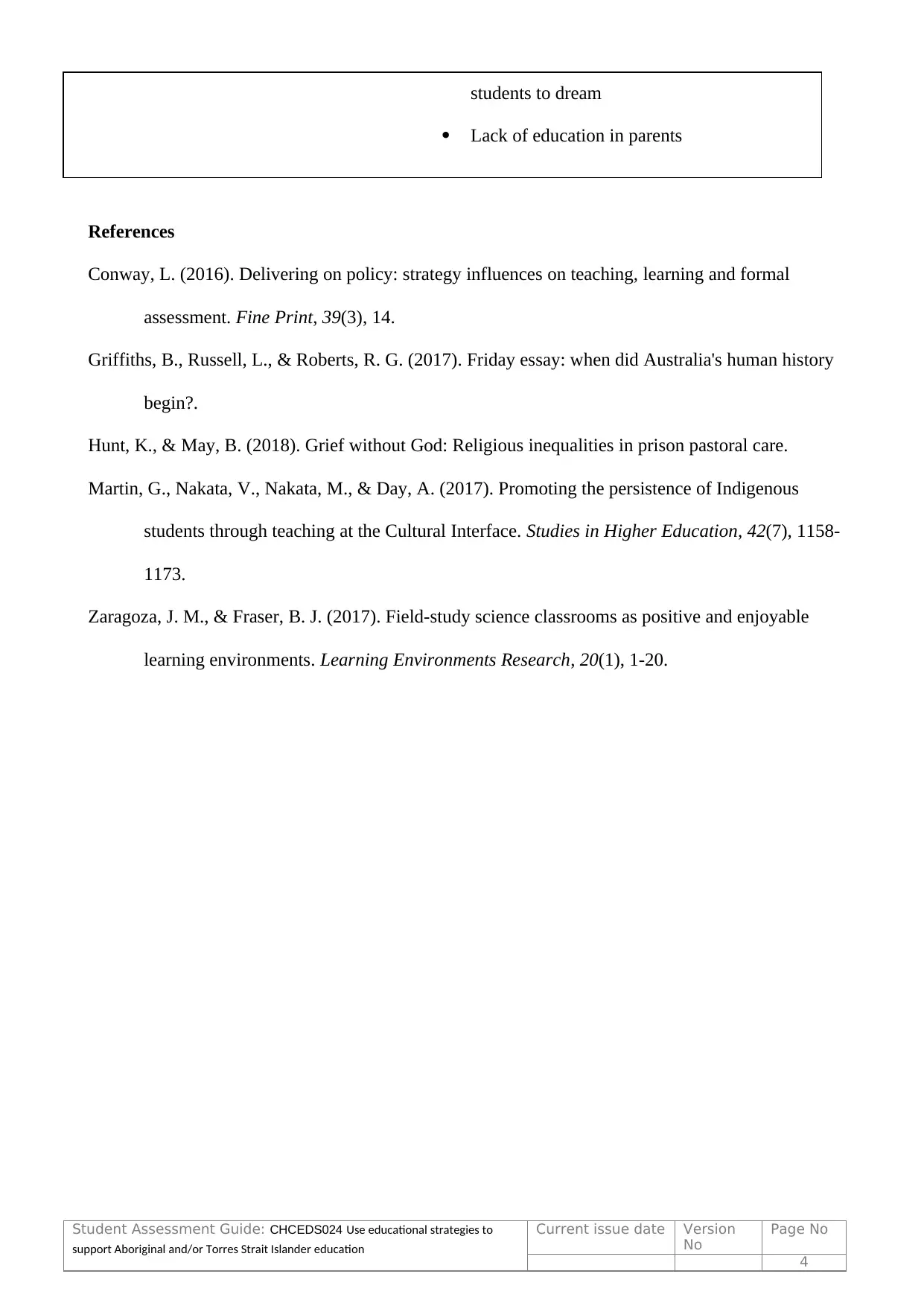CHCEDS024: Using Educational Strategies to Support Indigenous Students
VerifiedAdded on 2022/11/23
|4
|664
|425
Homework Assignment
AI Summary
This assignment addresses key aspects of supporting Indigenous students in educational settings, focusing on the CHCEDS024 unit. It explores the characteristics of a positive learning environment, communication strategies, and pastoral care. The assignment also delves into the history and culture of Indigenous peoples, LLN (Language, Literacy, and Numeracy) teaching strategies, and barriers to learning faced by Indigenous students. It references several videos and resources, including those related to Indigenous education in Canada, the USA, and New Zealand, and examines the importance of cultural context, community, and intentional teaching. The assignment also includes questions about discrimination, the Montessori education approach, and hearing loss in Indigenous children, providing a comprehensive overview of the challenges and opportunities in Indigenous education.
1 out of 4






![[object Object]](/_next/static/media/star-bottom.7253800d.svg)